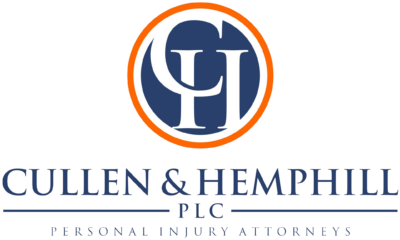DISCLAIMER: The results are specific to the facts and legal circumstances of each of the clients’ cases and should not be used to form an expectation that the same results could be obtained for other clients in similar matters without reference to the specific factual and legal circumstances of each client’s case.
Our client was injured in the backroom/kitchen area of supermarket in St. Petersburg, Florida, where she has worked, without incident, for over 19 years. One of the companies that supplied the supermarket was delivering food, and one of the delivery workers had carried a laptop computer bag into the backroom/kitchen area.
The delivery worker placed the laptop computer back against a rolling cart in the backroom/kitchen, and went about doing his delivery. The way that the computer bag was situated, the shoulder strap of the bag extended into one of the areas where supermarket employees regularly walked.
A Very Complicated Elbow Fracture
Our client was walking from one part of the kitchen area to the other, carrying kitchen utensils in front of her. She never saw the laptop bag, or the loose shoulder strap. Her foot somehow got entangled in the strap, causing her to trip and fall forward. As she fell, he left arm got caught underneath her body weight. She – and her fellow employees — immediately knew she was seriously hurt. Our client was in immense pain, and her coworkers could clearly see a deformity of her left elbow.
Our client was rushed to the hospital where she was diagnosed with a left proximal ulnar fracture, radial head dislocation, and coronoid fracture. The coronoid process is the part of the ulnar bone where the humerus usually rests. When this breaks, the elbow becomes very unstable.
Elbow Surgery With Extensive Hardware
There was no debate in the hospital – our client was immediately scheduled for surgery where she underwent: open reduction and internal fixation of the left proximal ulnar fracture, open reduction and internal fixation of left coronoid, open reduction of left radial head, repair of lateral collateral ligament, and a bone graft of the left ulna.
Because our client was a hard worker and loved her job, she was back to work in a couple of weeks — working one-handed because her left arm was still in a sling. Even with her arm in sling, her fellow employees testified that she was every bit the worker that they were — but much, much slower.
Our client continued have problems with her left elbow. The elbow remained unstable – even with the hardware installed. Over time, the bones in our client’s left arm healed, but they healed in such a way that they severely restricted her movement. She tried extensive physical therapy, but her left arm has still never returned to function. She eventually had to leave the job — and the coworkers — that she dearly, dearly loved.
As in every trip-and-fall case, the Defendant argued that our client was, herself, careless. They said she should have been watching where she was walking. They said the shoulder strap was open and obvious and therefore that she should have been able to avoid it.
How Does Workers’ Compensation Work In A Personal Injury Case?
Because our client was on-the-job at the time of her injury, the Workers’ Compensation carrier for her employer paid her initial medical bills, and 67% of her lost wages. The Worker’s Compensation carrier had also paid our client a lump sum amount to “wash out” any future Workers’ Compensation benefits she might have been entitled to. Because our client was injured by someone who was not a fellow employee, and not employed by her employer, she was able to pursue a personal injury case against the employer of the vendor that injured her.
Our client was referred to us by her Workers’ Compensation attorney. Elements of our client’s third-party claim against the vendor included compensation for our client’s pain and suffering, loss of the ability to enjoy life, impairment, disability, and emotional losses.
We were able to secure $250,000.00 for our client at a mediation conference.
Because Worker’s Compensation paid benefits on behalf of our client, the Workers’ Compensation carrier had a lien against our client’s personal injury claim by law. Whenever we represent a client that has received Workers’ Compensation benefits, one of our tasks is negotiating and resolution of the Workers’ Compensation lien at the end of our client’s case. We were able to achieve a very satisfactory resolution of our client’s lien in this case.
$250,000

 Call Us Now
Call Us Now Email Us Now
Email Us Now